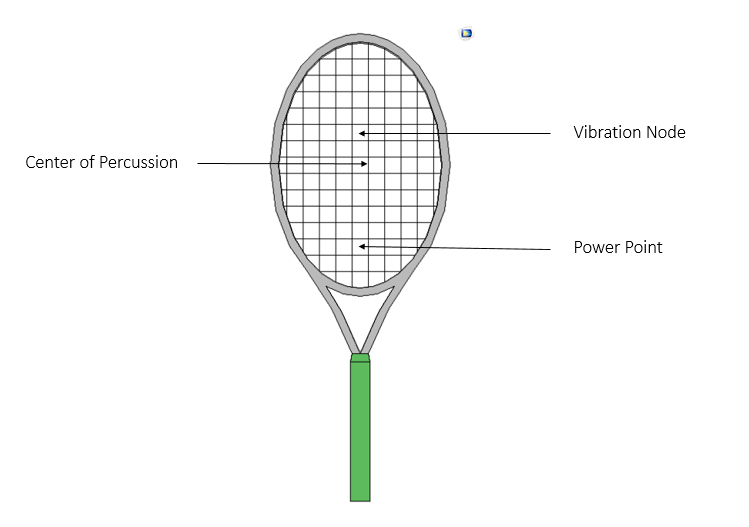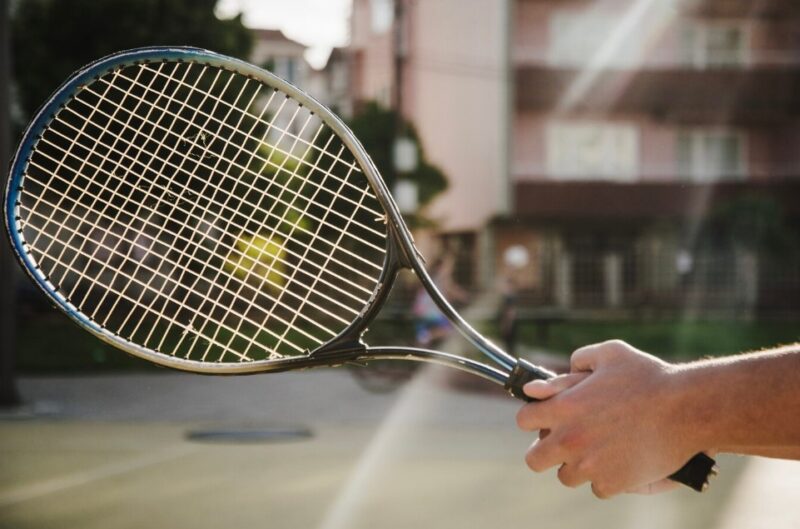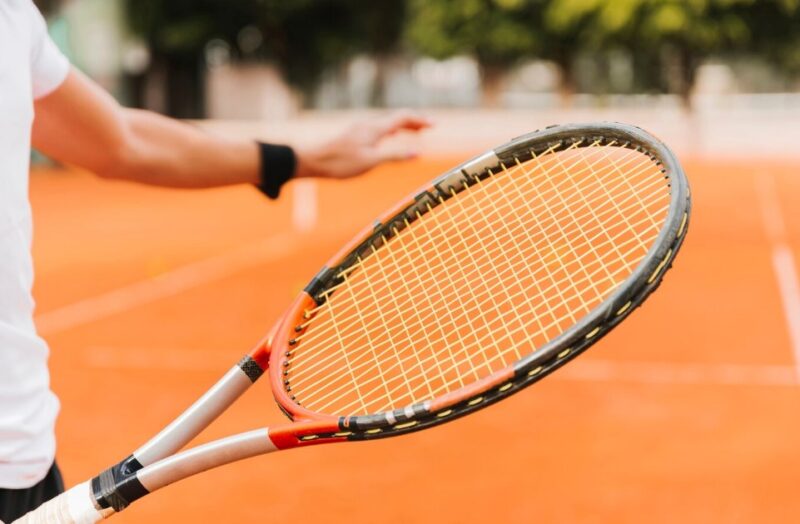If you’ve ever hit a tennis ball and felt that perfectly crisp, effortless connection that sends the ball flying with power and control, you’ve likely found the elusive “sweet spot” on your racket—even if you didn’t know it at the time. For anyone serious about improving their game, understanding what the sweet spot is and how to consistently hit it is key to unlocking better performance on the court.
Key Highlights
- The sweet spot is the most efficient area of a tennis racket’s string bed.
- Hitting the sweet spot maximizes power, reduces vibration, and improves control.
- Two main sweet spots exist: the center of percussion and node of vibration.
- Racket size, string tension, and grip technique all affect sweet spot consistency.
- Practicing timing and footwork increases your chance of hitting it more often.
- Technology tools can help you find your stroke rhythm and sweet spot pattern.
The Sweet Spot Explained in Simple Terms

Let’s break it down. The sweet spot on a tennis racket isn’t just some marketing buzzword—it’s a physics-backed phenomenon. Technically speaking, there are two sweet spots on a racket: the center of percussion and the vibration node. They’re usually close to each other, near the middle of the string bed, and they’re responsible for that “pure” feel when you strike the ball just right.
When you hit the ball on the sweet spot, the energy transfer is clean and efficient. There’s minimal vibration in your hand, which helps with comfort and control. Miss it by even an inch, and you can feel the difference—less power, more shock, and often less accuracy.
Why It Matters So Much on the Court
Hitting the sweet spot does more than just make the ball go faster—it directly impacts your confidence and gameplay. When you consistently connect with this area, your shots feel smoother, your arm feels less strain, and you’re more likely to maintain rhythm during rallies. That’s why pros invest so much time into footwork and stroke repetition—it all leads to more consistent sweet spot contact.
A great way to analyze your stroke mechanics is to use tools like swing sensors or even an AI content detector that helps spot unnatural movements or patterns in your swing data if you’re logging video for analysis. Some software uses AI models to break down swing paths and show you where on the racket the ball tends to hit.
How Racket Design Affects the Sweet Spot

Not all rackets are created equal when it comes to sweet spot size and location. Here’s what to keep in mind:
Key Equipment Factors:
- Head size
A larger racket head (like 100+ square inches) typically has a bigger sweet spot, which is more forgiving on off-center hits. - String pattern
Open string patterns give more power and spin but can shrink the sweet spot. Dense string patterns provide more control. - Racket stiffness
Stiffer rackets tend to offer a more defined sweet spot, while flexible ones absorb more shock and can feel “mushier.” - Balance and weight
Heavier rackets offer better plow-through and may increase sweet spot stability, but they require more strength to handle.
The takeaway here? Choose a racket based not just on brand or style, but on what helps you find and utilize your sweet spot more often.
How to Know When You’ve Hit the Sweet Spot
You don’t need a high-tech swing tracker to figure this out—though those can help. Most of us recognize it immediately by feel. The racket stays steady in your hand, there’s no jarring feedback, and the sound is satisfying. It’s almost like the ball sticks to the strings for a second and then launches forward like it’s on a rail.
You’ll know you missed it when:
- You hear a dull or off-pitch sound.
- Your hand or arm vibrates.
- The ball loses direction or pace.
The better you get at noticing this in real time, the faster you can adjust your mechanics mid-match.
How to Practice Hitting the Sweet Spot
Now to the part that separates casual players from people who genuinely want to elevate their game. Finding the sweet spot once is great. Hitting it 80% of the time? That takes effort and specific training strategies.
Here’s what’s helped me—and plenty of players I’ve trained with over the years.
Drills That Actually Work:
- Shadow swings in front of a mirror
Watch your stroke path, especially during forehands and backhands. - Drop feeding with a partner
Start slow and controlled. Focus only on clean contact, not power. - Mini-tennis at the service box
Limits movement and forces precision. It sharpens hand-eye coordination quickly. - Target practice with tape
Place a strip of tape across the center of your strings. Try to strike it every time and observe the results. - Slow-motion video review
Record your sessions and review them to spot where contact is happening most often.
The best players aren’t perfect, but they’ve trained themselves to adjust their body mechanics when they feel a mishit, and that feedback loop starts with sweet spot awareness.
Footwork and Timing Matter More Than You Think
You could have the most expensive racket on the planet, but if your timing and foot positioning are off, your sweet spot won’t do you any favors. This part of the game is often overlooked because it’s not flashy. But when your body is balanced and your steps put you in the right spot, hitting the sweet spot becomes way easier.
You’ll want to pay attention to:
- Early racket preparation
- Getting your body behind the ball
- Proper spacing between you and the bounce point
- Keeping your head still through contact
It’s all connected. Sweet spot contact isn’t just about the hand—it’s about the entire kinetic chain syncing up.
Should Beginners Even Worry About This?

Short answer: absolutely. If you’re just starting out, knowing where and how to find the sweet spot can actually fast-track your learning curve. Many beginners think their issue is lack of strength or speed, but really, they’re just not hitting the most effective part of the racket.
Choose a racket with a larger head size, string it with a mid-range tension (say 55 lbs), and focus on form, not force. As your timing and coordination improve, you’ll start hitting the sweet spot more naturally.
Final Thoughts: It’s a Game-Changer
If you’ve played tennis for any length of time, you already know how satisfying a sweet spot shot feels. It’s clean, precise, and makes your opponent scramble. But the real win? Hitting it consistently. That’s when your game starts to shift from just playing to actually competing.
Finding the sweet spot isn’t about perfection—it’s about being intentional. Whether you’re a weekend warrior or someone training five days a week, sweet spot awareness is one of the fastest ways to improve control, comfort, and confidence. And once you lock into it, you’ll wonder how you ever played without it.

